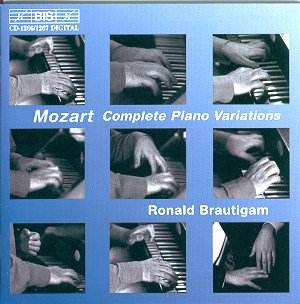 Composer: Various
Composer: Various
Works: Johann Sebastian Bach: Suite for Orchestra No. 3 in D Major, BWV 1068; Tomaso Giovanni Albinoni: Concerto in D Minor, Op. 9/2 (Adagio); Antonio Vivaldi: Flautino Concerto for Piccolo, Strings & Continuo in C Major, RV 443; Tomaso Giovanni Albinoni: Adagio for Organ, Violin & Strings in G Minor; Alessandro Marcello: Concerto for Oboe & Orchestra in D Minor; Georg Philipp Telemann: Concerto for 2 Transverse Flutes; Johann Pachelbel: Canon and Gigue for 3 Violins & Continuo in D Major; Henry Purcell: Chaconne (Curtain Tune from “Timon of Athens”), for Harpsichord in G Minor; George Frideric Handel: Solomon, HWV 67 (Arrival of the Queen of Sheba); Tomaso Giovanni Albinoni: Oboe Concerto in D Minor (Adagio, transcribed by Bach for 2 Violins & Continuo)
Performers: Il Giardino Armonico
Recording: January – February 2001, Chiesa di San Giorgio, Morbio Inferiore, Switzerland
Label: TELDEC 8573-85557-2
The Italian ensemble Il Giardino Armonico has carved a niche for itself as a leading force in the performance of Baroque music, celebrated for their vibrant interpretations and technical prowess. Their latest offering, a compilation of well-trodden Baroque favorites, aims to engage a broader audience, yet raises questions about the artistic integrity of a project that feels more like a commercial endeavor than a curated artistic statement. With works spanning from Bach to Handel, this recording is a veritable showcase of Baroque “greatest hits,” but the choice of repertoire may overshadow the ensemble’s more profound interpretive capabilities.
The opening track, Bach’s Suite No. 3 in D Major, features the iconic Air on the G String, which is performed with a lushness that is nearly expected yet lacks the emotional depth often associated with this piece. The tempo, notably slower than one might anticipate, detracts from the buoyancy that can be achieved within Bach’s intricate counterpoint. This interpretation, while technically proficient, misses an opportunity for a more vigorous and dynamic engagement with the music. In contrast, their rendition of Vivaldi’s Flautino Concerto brings a refreshing energy, highlighting the ensemble’s agility and command of the lively, virtuosic passages typical of the composer. The piccolo, played with clarity and precision, soars above the strings, creating an exhilarating contrast that is both vibrant and engaging.
The recording quality is commendable, capturing the ensemble’s sound with clarity and warmth. The acoustic of the Chiesa di San Giorgio provides a resonant backdrop that enhances the overall listening experience. However, the engineering choices, particularly in pieces like Pachelbel’s Canon, tend to emphasize the familiarity of the work to the detriment of its transformative potential. The slight echo in the hall, while adding richness, occasionally blurs the crispness required for such tightly woven textures, particularly in the fugal passages.
Il Giardino Armonico’s interpretations of Albinoni’s Adagios are executed with a sensitivity that brings forth the melancholy inherent in the music. Yet, the decision to include the “improvised” variations on Greensleeves feels misplaced; the work, while charming, strays from Baroque authenticity and does not align with the ensemble’s core strengths. This choice, along with the inclusion of a few other popularized gems, reinforces the impression of a compilation rather than a cohesive artistic vision.
The overall effect of this recording is one of dilution, as the ensemble’s formidable artistry is somewhat masked by the commercial aspirations of the compilation format. While it may serve as an accessible introduction to Baroque music for the uninitiated, it does not offer the depth or innovative spirit that one might expect from a group of Il Giardino Armonico’s caliber. For those familiar with the repertoire, there are numerous alternative recordings that provide more insightful interpretations and a more authentic Baroque experience. The ensemble’s considerable talents are evident, but they would benefit from pursuing projects that challenge them to dig deeper into the music rather than rely on the allure of familiarity to captivate their audience.



